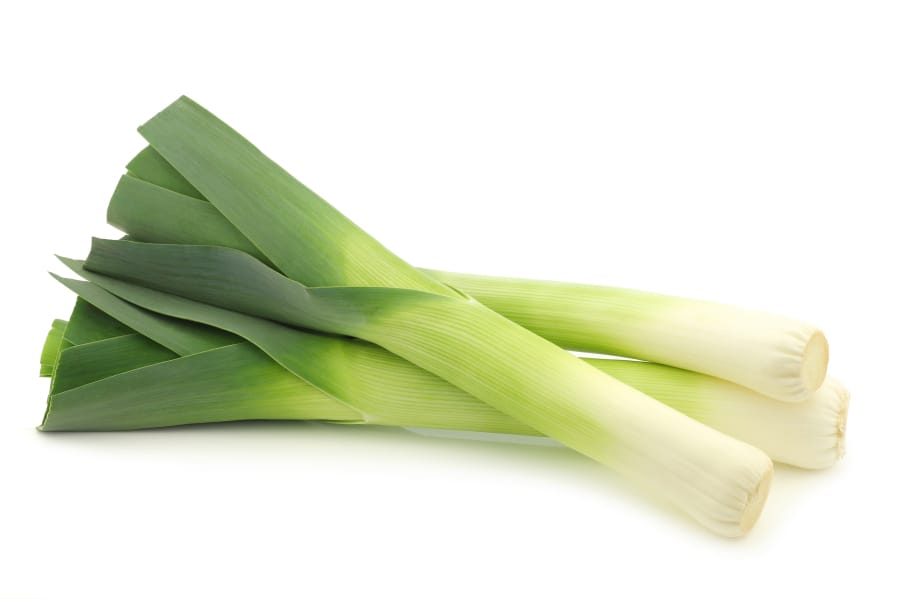Leeks are not a vegetable I ate at all when growing up. Is a leek just a big green onion? What parts do you eat? Do you eat it raw or only cooked? So many questions!
Leeks are like a giant green onion and are related to onions, garlic, scallions and chives. Leeks resemble the shape of scallions with a narrow white bulb and leafy green tops but are much larger. I’m told that the taste of leeks is like a mild onion and a little sweet. As with most vegetables, the younger leek is more delicate in texture and flavor, which are best used in raw applications.
There are two general types of leeks. Early season leeks grow faster, are smaller and milder in flavor. Late season leeks grow more slowly, have a wider stalk and a bolder flavor.
Leeks are sold in bunches of about four leeks each with the roots and dark green leaves intact. Select leeks that have a slender white bulb that is firm with tightly rolled dark green tops. Look for those that are more cylindrical without a large bulb on the end. Avoid those with a hard seed stalk as they will be woody and tough.
Leeks can emit odors like onion and stink up the refrigerator. Do not wash or trim them before storing. Instead, wrap them in plastic and place them in the vegetable drawer. Fresh leeks can be stored for as long as two weeks. Cooked leeks should be covered and refrigerated no longer than two days.
Preparing leeks is said to be easy, so I am ready to give it a try. Rinse the leeks well, being sure to fan out the leaves that tend to trap a lot of dirt. Cut off the roots and the darkest green tops. The remaining white stalk and light green leaves that are beginning to separate are the edible parts. Cut each leek into quarters lengthwise, trying not to cut all the way through the white end. Pat the leeks dry, then chop, dice or slice as needed.
Leeks can be eaten raw, roasted, grilled or boiled. Friends who cook leeks say that they will get mushy or even slimy if overcooked. The goal is to cook them until tender and can be pierced by a fork with little force. When adding them to a recipe, it would be best to add them near the end of the cooking time. Leeks can also be used and treated like onion by saut?ing or caramelizing them.
Leeks sound like a new kind of fun vegetable to add to my produce list. I think my first try will be to add them to my roasted vegetable medley. Then this fall they may find their way into my soups.
Sandra Brown is a WSU emeritus faculty and a WSU Clark County Extension Master Food Preserver. For additional recipes, food preservation and food safety information visit http://ext100.wsu.edu/clark/?p=8163. Have questions? Call MFP Helpline at 564-397-5366.




